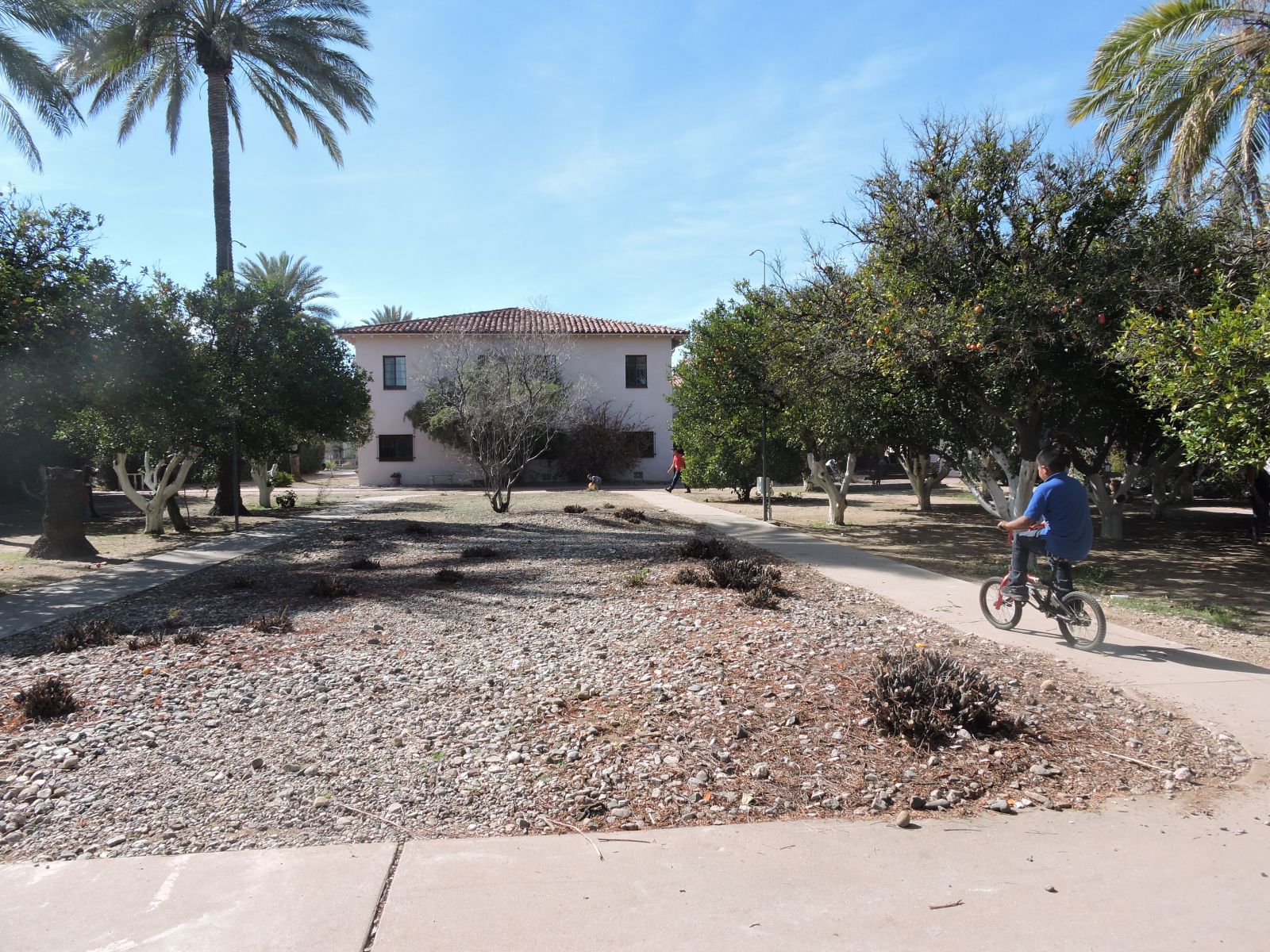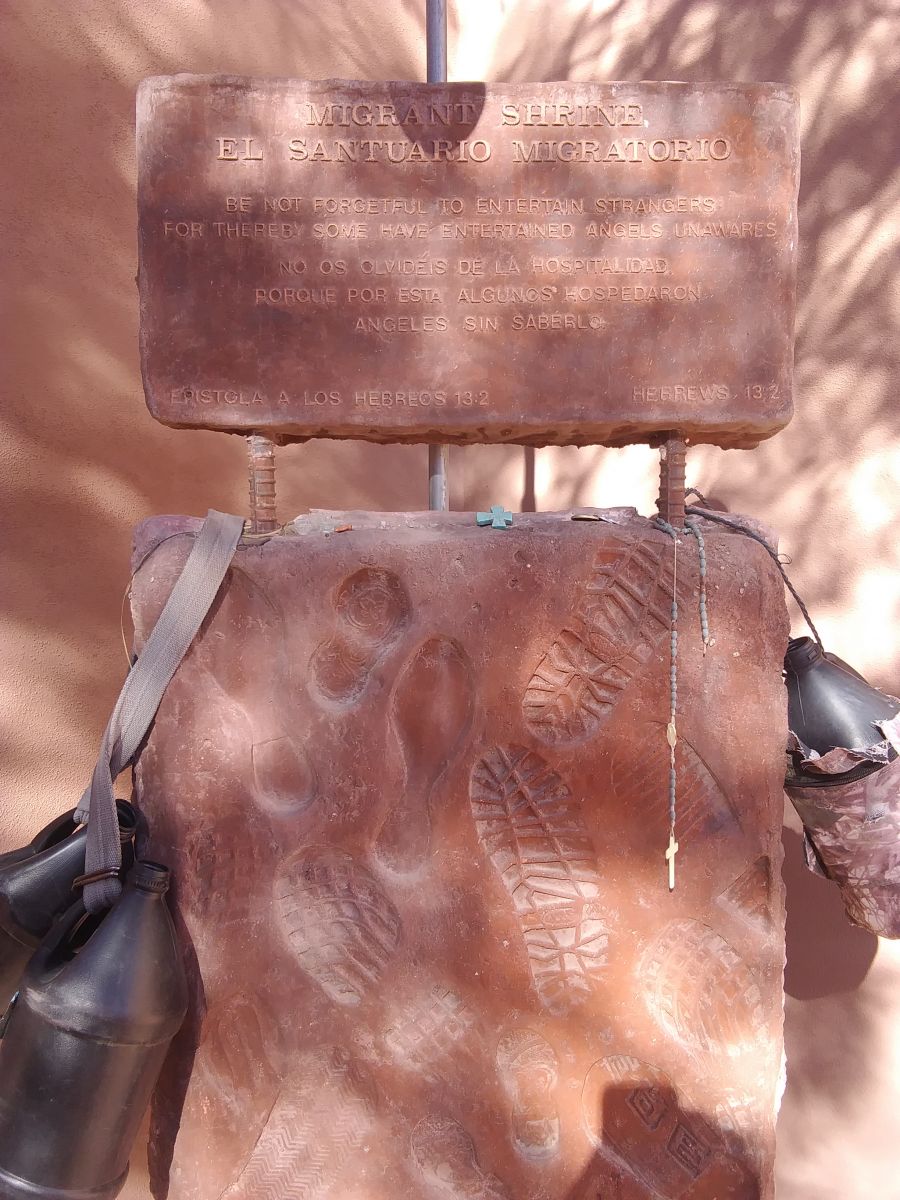Sick, tired and hopeful, Central American migrants are bused daily from a detention center to a former Benedictine monastery in Tucson, Ariz., where a small army of volunteers offers showers, fresh clothes and medical treatment. It serves as a weigh station between the ever-present violence and grinding poverty of their home countries, and what they hope will be a new life of safety and opportunity. We talk to both to migrants and the people who have been moved to help them, from the many volunteers who spend day and night at the shelter, to the man who found himself the owner of this historic and – to many – sacred property.
Learn more about the shelter's operations here.

Many enjoy spending time in the monastery's orange groves. These will eventually be removed for the construction of condominiums.
In the 1980’s, violent upheaval in Central America led congregations, primarily Christian, to offer sanctuary to immigrants facing deportation to El Salvador and other war-torn countries. Many leaders in the movement broke the law as they sought to shelter migrants from law enforcement. Today, a new sanctuary movement representing many faith communities defines sanctuary more broadly. We talk to those on the front lines of this new movement, which still relies on law enforcement’s disinclination to enter a house of worship but also looks for other ways to keep migrants safe.
AmyBeth Willis, lead organizer of the Southern Arizona Sanctuary Coalition
Sarah Roberts, resident of Tucson, nurse, and member of Southside Presbyterian Church

This shrine to migrants sits in the church's courtyard.